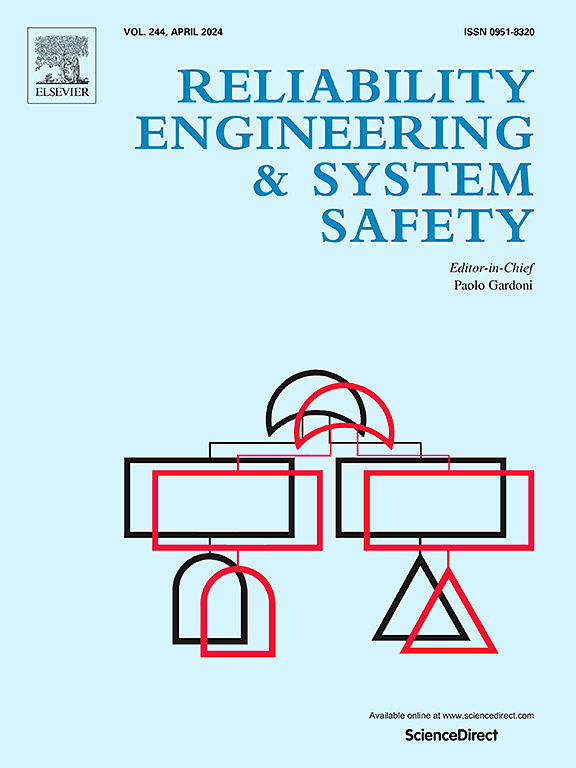动态自重构多部件系统基于性能的可靠性预测定量框架
IF 9.4
1区 工程技术
Q1 ENGINEERING, INDUSTRIAL
引用次数: 0
摘要
在多组件系统中,所有组件的性能可能受到退化程度最高的组件的限制。这种依赖性会导致系统出现不希望看到的性能损失。迄今为止,工程师们已经开发了一种以性能最大化为导向的技术,该技术可以动态隔离和检索系统中的组件,以减轻依赖性引起的负面影响。尽管该技术在工程上得到了应用,但其在系统性能提升方面的有效性还缺乏系统的探索。在本文中,我们通过开发基于性能的系统可靠性指标预测的定量框架来填补这一空白,考虑到该技术(在本文中定义为动态自重构机制)可能完美或不完美地发挥作用,并且实时系统信息可能不可用或部分可用并带有偏差。首先,我们通过建模系统配置的概率分布来分析表征机制,并在此基础上主动预测系统基于性能的可靠性指标。然后,我们开发了一种粒子滤波算法,利用有噪声的多维多类型实时信息进行渐进的系统状态估计和可靠性预测。基于预测模型,我们量化了动态自重构机制的有效性,帮助运营商提高系统可靠性。提供了一个光伏系统的案例研究。本文章由计算机程序翻译,如有差异,请以英文原文为准。
A quantitative framework for performance-based reliability prediction for a multi-component system subject to dynamic self-reconfiguration
In a multi-component system, the performance of all components might be restricted by the most degraded component. This dependency results in an undesirable performance loss of the system. To date, engineers have developed a performance-maximization-oriented technique that enables dynamic isolation and retrieval of the components from and back to the system to mitigate the dependency-induced negative impact. Despite its engineering application, the technique’s effectiveness in system performance enhancement still lacks systematic explorations. In this paper, we fill the gap by developing a quantitative framework for the system’s performance-based reliability metrics prediction, considering the technique (defined as dynamic self-reconfiguration mechanism in this paper) may function perfectly or imperfectly, and the real-time system information may be unavailable or partially available with biases. First, we analytically characterize the mechanism by modeling the probability distribution of the system configuration, building on which we proactively predict the system’s performance-based reliability metrics. Afterward, we develop a particle filtering algorithm to utilize the noisy multi-dimensional-multi-type real-time information for progressive system state estimation and reliability prediction. Based on the prediction models, we quantify the effectiveness of the dynamic self-reconfiguration mechanism, which assists operators in system reliability enhancement. A case study of a photovoltaic system is provided.
求助全文
通过发布文献求助,成功后即可免费获取论文全文。
去求助
来源期刊

Reliability Engineering & System Safety
管理科学-工程:工业
CiteScore
15.20
自引率
39.50%
发文量
621
审稿时长
67 days
期刊介绍:
Elsevier publishes Reliability Engineering & System Safety in association with the European Safety and Reliability Association and the Safety Engineering and Risk Analysis Division. The international journal is devoted to developing and applying methods to enhance the safety and reliability of complex technological systems, like nuclear power plants, chemical plants, hazardous waste facilities, space systems, offshore and maritime systems, transportation systems, constructed infrastructure, and manufacturing plants. The journal normally publishes only articles that involve the analysis of substantive problems related to the reliability of complex systems or present techniques and/or theoretical results that have a discernable relationship to the solution of such problems. An important aim is to balance academic material and practical applications.
 求助内容:
求助内容: 应助结果提醒方式:
应助结果提醒方式:


